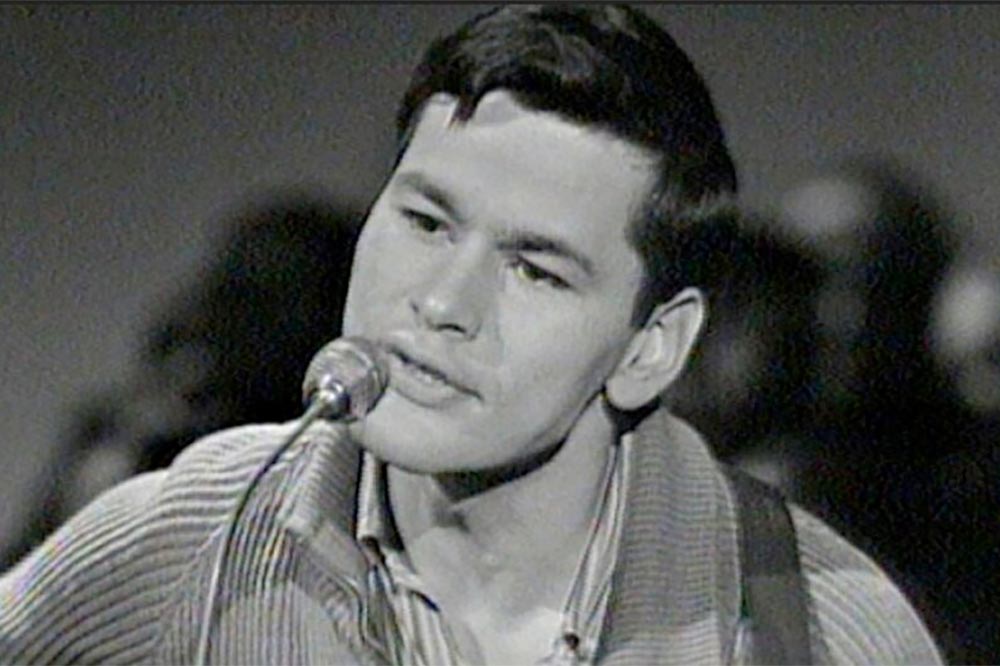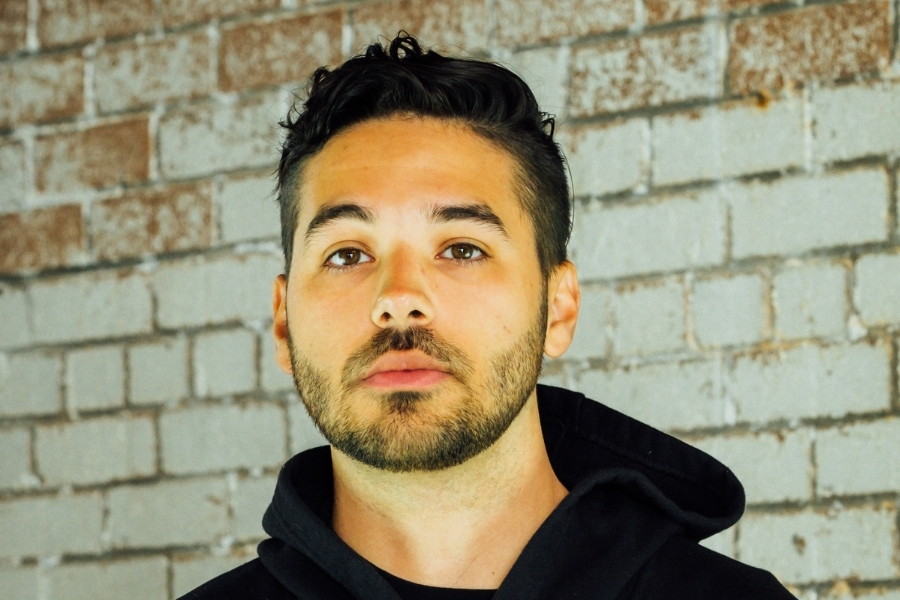By the time he passed in 2013 at 71 years, Willie Dunn was finally getting a belated taste of a renewed interest in his music. It had been a long trip from 60’s folk singer on the Montreal scene, to a possible next-big-thing on the country scene, to a foot note in Canadian music history, to a popular “re-discovery” over the last decade. A recent presentation at the Solstice Indigenous Music Awards drew such acclaim it seems to have given Willie an extra push, just in time for the release of “Creation Never Sleeps, Creation Never Dies,” a new anthology of his music.
Willie Dunn was born August 14, 1941 in Montreal to a Mi’kmaq mother from Restigouche (Listuguj) and a British immigrant father. The family never discussed, let alone celebrated his mother’s Mi’Kmaq background. Dunn Senior had been a song writing, rail riding hobo, according to Dunn in a 1965 interview.
Dropping out of school in grade 10, Dunn enlisted and joined the Canadian armed forces on a U.N. mission in Zaire, formerly Belgian Congo (now Democratic Republic of Congo), where he received a medal. He left the military at age 22, as he said, trading his gun for a guitar. A Congolese teacher who had asked him “where are the American Indians now?” inspired Dunn to head to Listuguj, where “they recognized me right away because I looked like the people there. And I knew that I had found my kin. Later I realized that the Black teacher in the Congo – he was also my kin.”
In 1968, Dunn composed a song for Indian Magazine, a CBC radio show, to which he later used archival photos and created the famous National Film Board short, “The Ballad of Crowfoot.” As he explained in a CBC TV interview in 1970, “the only thing stronger than film as far as getting things across, is actual, direct action, whether you’re actually going out there, putting your body in a position where people have to react against it. So film is a strong thing. I don’t think it’s it’s the end-all, I think it’s the beginning. We have to inform the people. Our people.”
By this time the NFB had the so-called Indian Crew in their complement. They were volunteers for the Company of Young Canadians who received equipment and expenses from the CYC as part of the NFB’s Challenge for Change program. Dunn would lend a hand or a song to many NFB productions through the decade. He can be seen playing live in the 1972 film “The Other Side of the Ledger,” a story of the Hudson’s Bay Company told from an Indigenous point of view. Another song is in Alanis Obomsawin’s “Incident at Restigouche” documentary about Mi’kmaq fishing rights in Quebec.
Dunn developed his songs in coffee houses of the late 1960’s and even opened his own establishment, The Totem Pole. By 1970 he allegedly had a record deal, or was ducking calls from big labels, depending what one reads online. Columbia wanted to sell Willie as a new country outlaw, and there was a 1970 tour with Glen Campbell which went south, as it were.
Maclean’s weekly magazine published a ribald feature on Willie in June of that year. The article by Jon Ruddy starts with a quick rundown of Dunn’s excesses- in order, booze, smoking, women and other trouble. Police come up on the list of Willie’s troubles too, as Willie had been locked up a few times, for political and picayune offenses alike.
Dunn was a significant force among people paying attention to Indigenous sounds, but white, mainstream Canada knew little about him. And what little they heard must have been disconcerting to many readers of a Canadian mainstream magazine in 1970 – Dunn helped establish the Native Alliance for Red Power in Vancouver in 1967, and was a strident proponent of Indigenous rights, at a time when the federal government was contemplating one last push at mass assimilation by divesting itself of all responsibilities to First Nations, outlined in the 1969 White Paper. The Indigenous reply came in the form of The Red Paper.
Dunn remained a hard living activist, as his friend and co-worker and fellow Indigenous activist Johnny Yesno attested, calling him “a crazy bastard, a lazy bugger. I never ask him to do anything for me unless he’s hungry. I play his tapes and the audience always writes in to ask if the songs are on records. They’re not. Willie doesn’t care. There’s a guy from Columbia Records in New York that’s been trying to pin him down for three years. Most of the time you can’t even find him. He can’t stay in one place.”
One must wonder what lost songs of Willie’s might have sat in tape boxes gathering dust on CBC shelves around the country until our national broadcaster purged their tapes. The notion of artists outside the industry sending tapes of their songs and getting airplay on CBC is heart warming, but the relative paucity of recorded Indigenous music available from this era is disheartening.
According to Kevin Howes, whose work on the new Willie Dunn collection, “Creation Never Sleeps, Creation Never Dies: The Willie Dunn Anthology,” there are master tapes of some Dunn material, but others cuts on the new release were lifted from vinyl, as no tapes seem to exist. Dunn also appears on one of the two Mariposa Folk Festival live albums, performing “Heh Broker” in 1976. For a veritable troubadour who travelled and played a lot, there isn’t much live Dunn material.
The small Summus label released Dunn’s 1971 self titled debut album. This was re-recorded soon after for Quebec’s Ko’Tai label. And that would be all Canadians would hear from Dunn for many years. As Canadian record heads know, both Summus and Ko’Tai labels’ records are not easy to find, the records quickly went out of print, and popular titles are quite expensive, now. The rest of Dunn’s material comes from CBC produced transcription discs, which were pressed in small numbers for CBC affiliate stations, including a few abroad. These were never retailed, and copies of Dunn’s releases are almost impossible to find.
In Germany, where his talents were better appreciated in the 1980’s than here in Canada, Dunn toured (also playing Italy) and two albums were released on the Trikont label; first came ”The Pacific,” in 1980. This would take a few more years to see a Canadian release on Stompin’ Tom’s Boot Records label. “The Vanity of Human Wishes” was Dunn’s follow-up German album. In 2015, a DVD of a 2000 appearance in Berlin was released. In Canada, “Son of the Sun” was covered by Kashtin at the turn of the 90’s, bringing some exposure to younger fans.
Dunn never stopped making music, and busked for many years in Ottawa.
He released a CD, and one can imagine he sold cassettes like many of his fellow buskers of the 1980’s and 90’s. There are downloads available of unreleased demos and the like, released through his family. In 2005 Dunn received a Lifetime Achievement award at the Indigenous Music Awards. In June 2021, Solstice Indigenous Music Awards, Willie Dunn, was recognized posthumously as recipient of the Legacy Award.
Sadly, Willie Dunn never saw the release of the Native North America album, a collection of most Canadian Indigenous music – not powwow music, but of contemporary tunes. The collection brought more attention to the artists featured, and Dunn was among the most prominent “discoveries.”
Luckily for those of us who didn’t know who he was when Dunn was when alive, there is a concert on Youtube, recorded not long before Willie left us, on August 5, 2013. Willie passed away in Ottawa, at the age of 71.
Here is a shorter biography and an thorough rundown of Willie Dunn’s released work, from CBC transcription discs to records to a DVD and downloads.
Here is Willie Dunn’s NFB page.
Here is a 2013 show by Willie Dunn at the CNACA Festival. Cuts include Charlie, School Days, Louis Riel, Crazy Horse and more.



